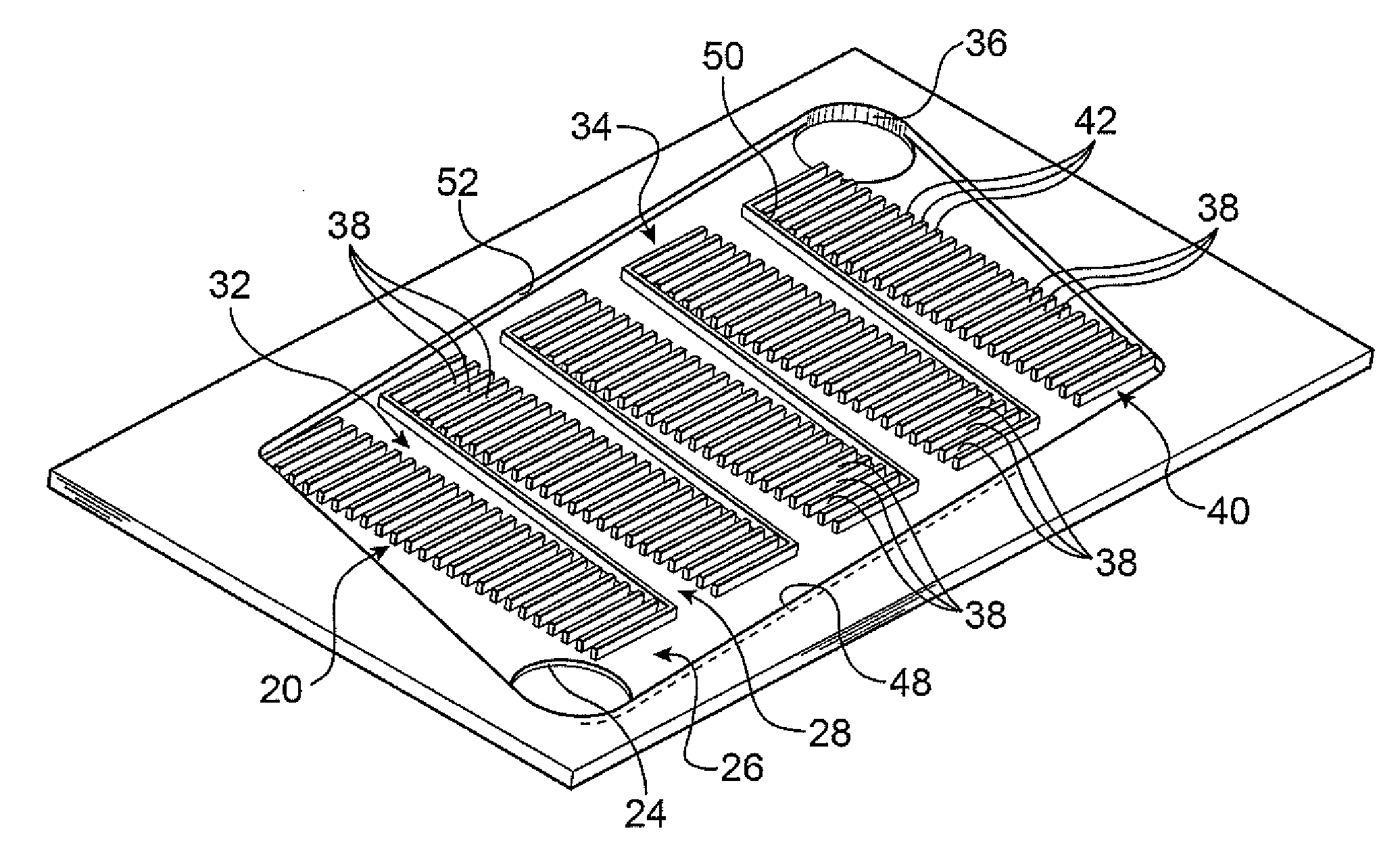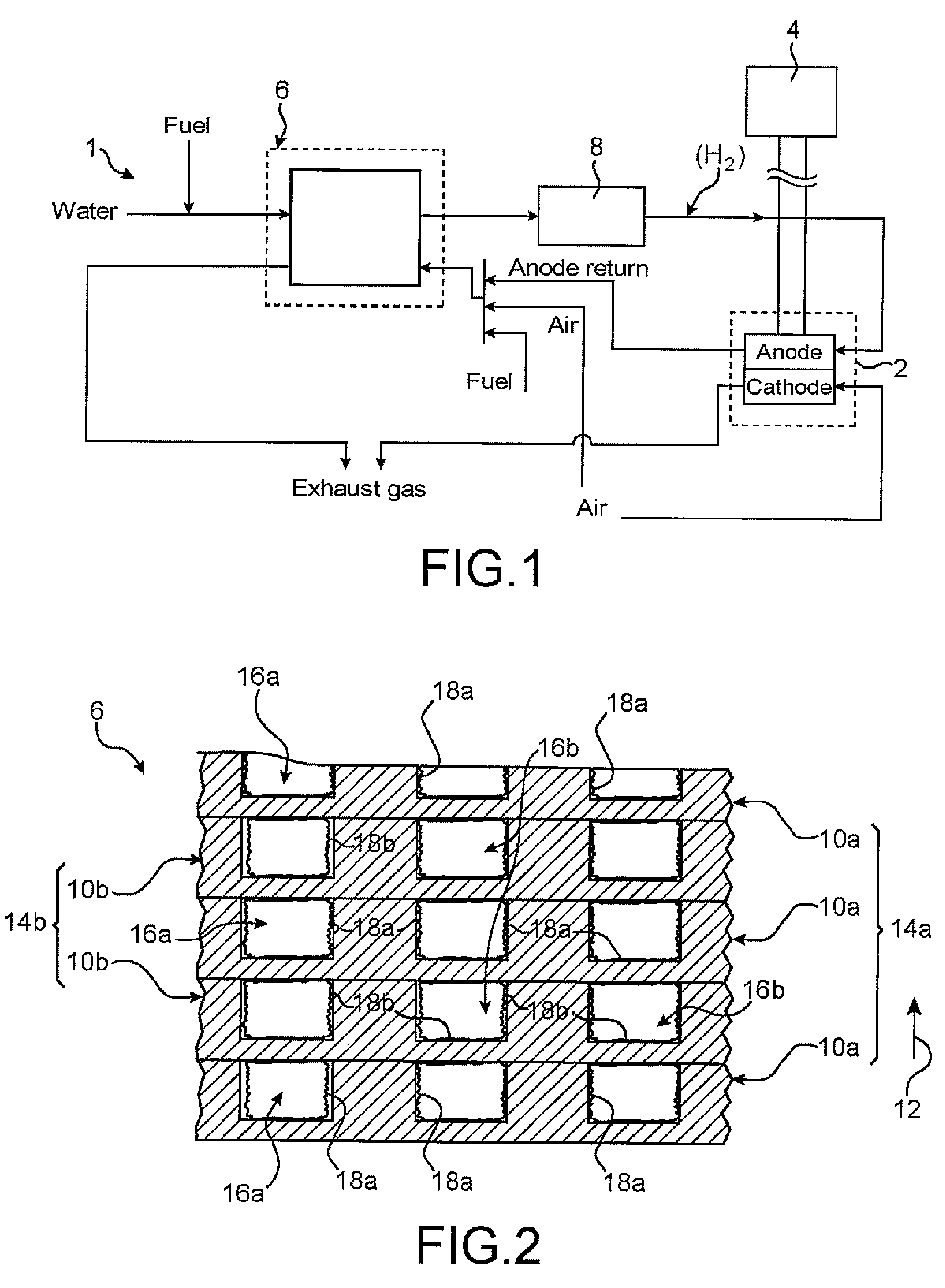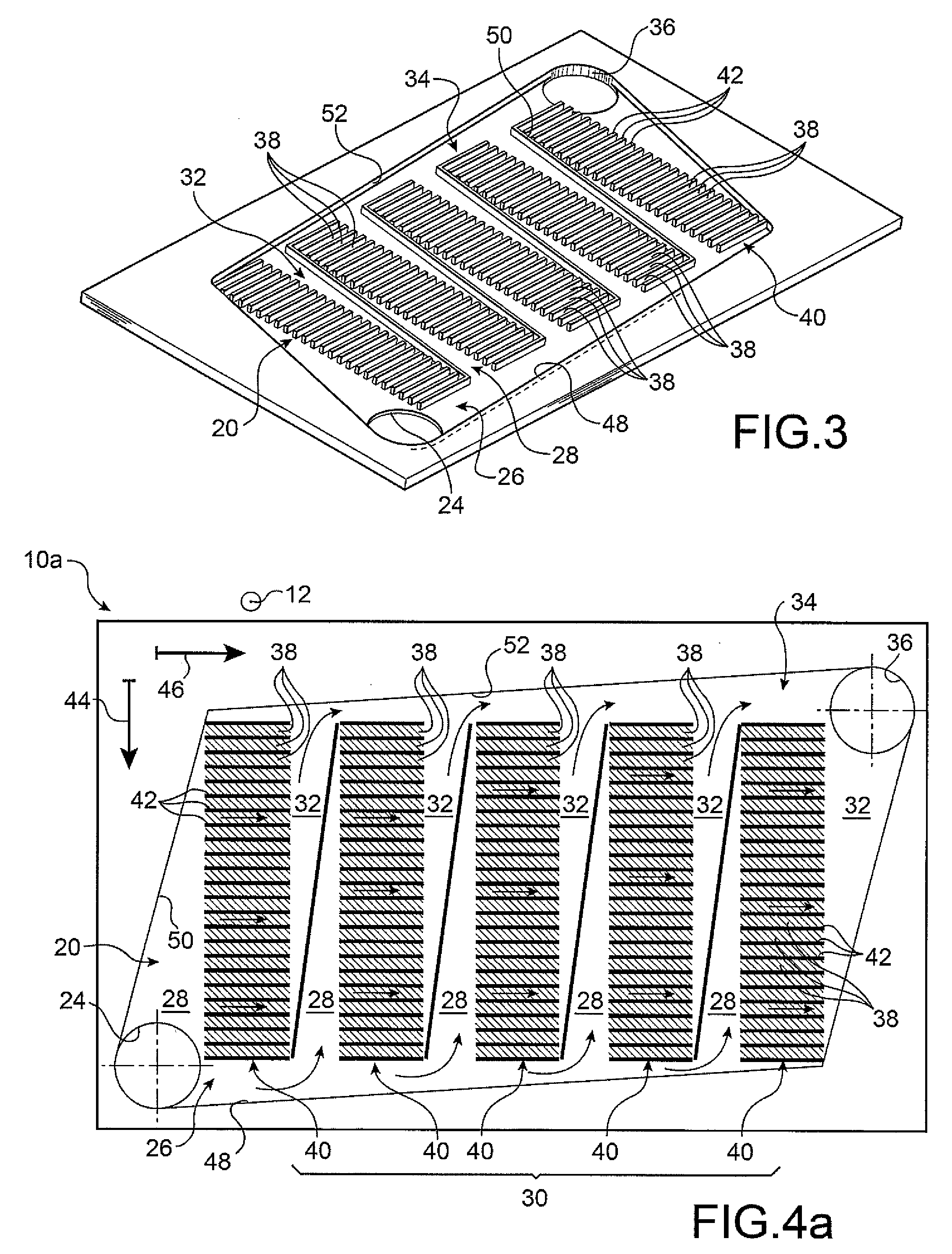Heat Exchanger System Comprising Fluid Circulation Zones Which are Selectively Coated with a Chemical Reaction Catalyst
a heat exchanger and fluid circulation technology, applied in the field of micro heat exchangers, can solve the problems of increasing the risk of nitrogen oxide formation within the first fluid circulation zone, choosing suitable materials, and often expensive, and achieves the effect of reducing the risk of nitrogen oxide formation, and reducing the risk of forming nitrogen oxides
- Summary
- Abstract
- Description
- Claims
- Application Information
AI Technical Summary
Benefits of technology
Problems solved by technology
Method used
Image
Examples
Embodiment Construction
[0052]With reference first to FIG. 1, there can be seen a fuel cell installation 1 according to a preferred embodiment of the present invention.
[0053]This installation 1 therefore incorporates a fuel cell 2, for example of the PEMFC (“Proton Exchange Membrane Fuel Cell”) type, comprising a proton exchange membrane as electrolyte. In a manner known to the person skilled in the art, a fuel cell is an assembly comprising generally a plurality of basic cells stacked one above the other. In each of the basic cells of the fuel cell, an electrochemical reaction takes place between two reagents which are introduced continuously into the basic cells. The fuel (hydrogen) is brought into contact with the anode, while the oxidant (oxygen) is brought into contact with the cathode, the latter being separated from the anode via the electrolyte of the ion exchange membrane type.
[0054]At the anode, an oxidation reaction of the fuel takes place, represented by the following reaction scheme:
2H2→4H++4e...
PUM
| Property | Measurement | Unit |
|---|---|---|
| width | aaaaa | aaaaa |
| width | aaaaa | aaaaa |
| temperature | aaaaa | aaaaa |
Abstract
Description
Claims
Application Information
 Login to View More
Login to View More - R&D
- Intellectual Property
- Life Sciences
- Materials
- Tech Scout
- Unparalleled Data Quality
- Higher Quality Content
- 60% Fewer Hallucinations
Browse by: Latest US Patents, China's latest patents, Technical Efficacy Thesaurus, Application Domain, Technology Topic, Popular Technical Reports.
© 2025 PatSnap. All rights reserved.Legal|Privacy policy|Modern Slavery Act Transparency Statement|Sitemap|About US| Contact US: help@patsnap.com



